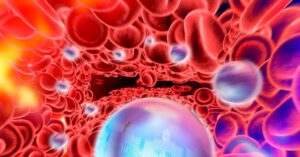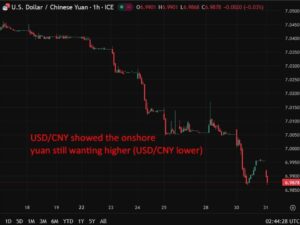
The College of Arts and Sciences at Indiana University Bloomington is spearheading a groundbreaking research initiative aimed at harnessing the potential of nanocrystals—tiny crystalline particles so minuscule that tens of thousands could span the width of a human hair. These diminutive materials hold the promise of revolutionizing clean fuel generation, accelerating electronic devices, and transforming chemical manufacturing.
The Center for Single-Entity Nanochemistry and Nanocrystal Design (CSENND), established in 2022, has been awarded $20 million in Phase 2 funding from the National Science Foundation’s prestigious Centers for Chemical Innovation program. This funding marks a significant expansion of the center’s research capabilities.
Collaborative Research Across Institutions
As CSENND evolves into a larger research hub, it unites scientists from nine institutions, including Indiana University, Texas A&M University, University of Texas – Austin, University of Illinois at Urbana-Champaign, University of Washington, Temple University, University of Pennsylvania, University of Rochester, and Purdue University. Together, they are exploring the unique behaviors of individual nanocrystals.
While traditional research often examines large batches of particles to determine average behaviors, CSENND adopts a “single-entity” approach. This method allows researchers to uncover subtle differences that could lead to more precise and powerful technological advancements.
“Nanocrystals are fascinating materials with amazing potential to solve real-world problems,” said Sara Skrabalak, director of CSENND and the James H. Rudy Professor and Robert & Marjorie Mann Chair in the College’s Chemistry department.
The Unique Properties of Nanocrystals
Nanocrystals often behave differently than their larger counterparts, such as metals, powders, or crystals visible to the naked eye. Their minuscule size alters how they absorb light, conduct electricity, or participate in chemical reactions. For instance, while gold metal typically appears shiny and yellow, gold nanocrystals can exhibit a spectrum of colors due to their nanoscale interactions with light.
These unusual properties are not merely intriguing; they hold boundless potential. By understanding individual nanocrystal behaviors, scientists can design materials that enhance battery charging speeds, improve solar panel efficiency, and make chemical manufacturing cleaner and more efficient.
“Think of it like listening to a choir,” Skrabalak explained. “If you only listen to the sound of everyone singing together, you can miss how each individual voice contributes. We’re tuning in to those individual voices, so to speak.”
Expanding the Reach of Nanoscience
Each Phase 2 partner brings specialized skills, ranging from theoretical modeling and high-resolution imaging to cutting-edge material synthesis. CSENND is also dedicated to public outreach and science education. In Bloomington, the center collaborated with artist Erin Tobey to create a mural next to the WonderLab Museum of Science, Health and Technology, illustrating the concept of scientific scale. With Phase 2 funding, these efforts will expand nationwide through partnerships with other artists and community groups.
“It has been incredibly rewarding to foster collaborations between different research groups, and I look forward to this network continuing to grow during Phase 2,” Skrabalak added.
“Nanocrystals are like a microscopic goldmine of molecular treasures,” said NSF Assistant Director for Mathematical and Physical Sciences David Berkowitz. “The NSF Center for Single-Entity Nanochemistry and Nanocrystal Design will be a unique scientific resource in the U.S. by creating AI-based capabilities to rapidly explore and pinpoint individual nanocrystals with valuable properties.”
The Future of Nanotechnology
CSENND is part of the National Science Foundation’s Centers for Chemical Innovation program, which supports fundamental research with high potential for transformative impact. Understanding nanocrystals could help shape a future with cleaner, faster, and more precise technologies.
“The Center is about more than just materials chemistry,” Skrabalak said. “We are building a community of researchers and engaging the public in how the tiniest building blocks of matter can shape the future and improve lives.”
The announcement comes as the scientific community increasingly recognizes the potential of nanotechnology to address global challenges. As CSENND continues its pioneering work, it stands at the forefront of a field poised to redefine technological capabilities and environmental solutions.







